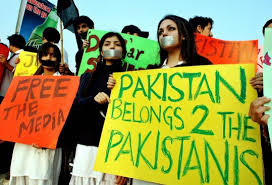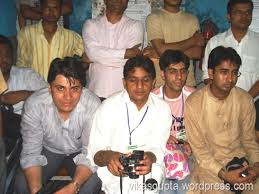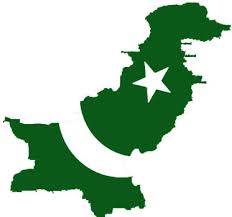by Dr Howard Schweber
After spending a summer teaching political theory to Pakistani undergraduate students, I can confidently make two assertions: they are just like all the other college students I have known and taught in the United States for years, and, paradoxically, they are nothing like all the other college students I have ever known.
My first impression of Pakistani students was that they are, well, just that – college students. How utterly, disappointingly, unexotic. Grade conscious careerists, canny manipulators of the system, highly competitive…future engineers and finance majors.

But there are some differences. That word ‘elite’ comes into play here. In the US, no college student would describe him or herself as elite – that word is primarily reserved for use as a political insult. Americans, notoriously, valorise the idea of belonging to the middle class, sometimes to a ludicrous degree. These Pakistani students, at one of the best private universities in the country, have no such compunctions, and are quite pleased to describe themselves and their family backgrounds with the words, “we are the elites,” or other words to that effect. This tendency partly reflects an inherited colonialist culture; perhaps, it partly reflects the reality of deep economic divisions reflected in the ubiquitous servant culture that every American I spoke with privately described as jarring. Sure, American college students at top schools also tend to have a sense of entitlement, but nothing that compares with the elite classes of Pakistani society.
Not all the students at this private school come from backgrounds of privilege, however. In my small, unscientific sample of about forty students whom I met (out of sixty-five enrolled in my two courses), I encountered ten or so who come from worlds very different from that of Lahore’s upper class. These students tended to approach me quietly and privately to describe their backgrounds; students from small villages, not only in the Punjab but also from the areas around Karachi and Peshawar; the student who confided that he had grown up on streets similar to the ones we were walking through in the area around Lahore’s Walled City; the student from FATA, the Federal Administered Tribal Agencies, who couldn’t go home.

Looking closely at the students I met and taught reveals more mysteries. Some had serious problems with English, particularly in their writing, but most were extremely well prepared as far as language skills were concerned. It is when we look beyond language skills that puzzles begin to appear. What was most startling was the realization that these students were palpably uncomfortable with abstract concepts and what people in Education Schools call ‘critical thinking skills.’ When I raised this point to faculty and alumni, every one without exception acknowledged the problem, and pointed to the system of secondary education as the culprit. Undoubtedly the point is correct, but I think there is a deeper observation to be made here. In addition to being uncomfortable with abstract concepts, these students and their families seem to be uncomfortable with the idea of knowledge that is not justified by an immediate practical application. That discomfort extends to a reluctance to embrace basic scientific research as well as the humanities. I heard from students who wanted to study theoretical physics whose parents insisted that they become engineers; students who wanted to become historians whose parents did not see the point. The same attitudes exist in other places to be sure, but among my Pakistani students it seemed almost universal.
There is a classic saying about immigrants to America: “The first generation are factory workers so that the second generation can be lawyers so the third generation can be artists.” I mentioned that saying to a student, and he found it deeply puzzling.

Part of the reason for this discomfort with abstraction may have to do with a curiously limited range of background knowledge. My students – many of whom, again, had graduated from the finest schools – knew almost literally nothing of non-Pakistani history and culture. The reason is not that Pakistan is culturally isolated – far from it. At one point I found myself confronted by a room full of students who had an exhaustive knowledge of the movies that were Oscar candidates last year, but among whom the vast majority had never heard of Beethoven’s 9th Symphony. In general, students had no idea – not even a wrong idea! – about the significance of the French Revolution or World War I, the history of nationalism and empires, the contents of the Book of Genesis, the Scientific Revolution or the Renaissance. Again, when I pressed students, faculty members and alumni, the answer was always the same: the fault lies with the secondary school curriculum, and particularly the fact that during General Zia ul Haq’s rule secondary school curricula were shifted to emphasize Pakistan Studies and Islam at the expense of everything else. Again, that can only be a very partial explanation. But it is worth noting that this lack of cultural literacy helps feed the culture of conspiracy theories for which Pakistan is justly famous.

But what happens once these students get to college? I saw and heard about fine courses in Shakespeare and Islamic Jurisprudence, but when it comes to the social sciences it appears that the students who learn anything about these subjects at all (that is, those who choose to take courses outside of Accounting and Finance) are fed a steady diet of snippets of readings and excerpts from trendy current theories. Many students could and were eager to could talk fluently about Edward Said, Noam Chomsky, and (rather weirdly) Nazi Germany, but Locke and Rousseau, Machiavelli and Madison, Cromwell and Marx were all equally unknown territory. Undoubtedly, at this point I will be accused of Western ethnocentricism; how many American college students know the names of the first four Moghul Emperors? It’s a fair point, to be sure. But it’s a big world out there, and a dangerous place at home. Colleges don’t just train engineers, they train citizens and future leaders. Pakistan might do well to train some future leaders in the history and the philosophies that have shaped the world around them.
The point is not that the instructors at these colleges are bad teachers, far from it; the instructors I met were qualified, dedicated teachers. The point is that establishing the historical and philosophical context out of which modern ways of thinking emerge does not seem to be part of the curriculum . Nor, for that matter, does reading whole books seem to be an expected element of the college experience. I had a student in my office who complained, with no apparent sense of irony, that I had asked a question on a take-home exam to which he was unable to find an answer on Wikipedia. (To repeat an earlier observation, Pakistani college students seem to be almost entirely unencumbered by any sense of irony. I find this incomprehensible, given the Dadaist absurdity of much of Pakistani politics.)
Here’s another example to make my point: on the first examination that I administered, I included a question that asked students to ‘compare and contrast’ two texts. I was not particularly proud of the question, since for a lot of my students in the US, this is considered the most banal, overused, pedantic imaginable form of exam problem, the sort of question they’ve been encountering since the fourth grade. I was therefore nonplussed when several students asked what I meant by ‘comparing’ different texts. “We have never been asked a question like this,” said one, and a dozen others in the room expressed agreement. I have often had students request extensions on assignments, but this was the first time I encountered a request for an extension signed by five students – who, it turned out, were among the better students in the class! – a demand justified by the statement that “we have never been asked to write something like this before.”
In response to these inquiries, I tried to explain the idea of making comparisons in terms of taxonomy – you identify the salient characteristics and use them to classify objects in terms of their differences (“zebras have stripes, horses don’t.”) Now apply the same idea to, say, theories of history. “This writer views social arrangements as expressions of economic organisation, this writer understands social arrangements as the performance of ideological claims … and here’s the explanation that makes more sense in modern Pakistan.” I wasn’t necessarily expecting brilliant insights, but it was startling to realise that the question was, itself, startling.
And there is yet another dissonant strain that clashes with the ‘elite’ culture of graduates of Aitchison College, convent schools, and the like. This different voice appears in the form of deeply religious students, referred to on my particular campus by faculty and fellow students alike as ‘the mullahs.’ At first I thought I understood the significance of their presence on campus, but by the time I left I had concluded that the relationship between these religiously observant students, their fellows, and the administration is the great unsolved mystery that I take away from my visit. It may be the great unsolved mystery of Pakistan.

Over and over I was warned, by faculty members and students alike, to beware of the religious students. When I mentioned some of the texts that I was teaching, a senior colleague was first horrified, then said “well, you are probably all right because it is the summer,” (since there are fewer students around, I suppose). All of this fed into a rather well-settled narrative of universities as bastions of secular knowledge (and a fair amount of partying in the men’s dorm, I hear), besieged by the forces of religious extremism.
But then I got to know a few students who are, themselves, religiously observant. They tell a different story. Their claim is that the so-called ‘mullahs’ are two groups of students. One group, led by an instructor, belong to the Naqshbandis, a Sufi order, the other to the Tableeghi Jamaat, an organization dedicated to preaching Islam. Neither group, according to these students, has any interest in confrontation. The same students also insist that there have never been any incidents of religious students harassing secular students or faculty or disrupting classes, and that the college Disciplinary Committee would make short work of any student who tried to do so. By contrast, the same students also complain of a pervasive anti-religious bias. In an e-mail, a student wrote: “I remember that in one particular class a student with a beard came late to class, which is a normal practice, and the instructor said to him sarcastically, ‘Oh go back and offer prayers, because these things (classes) are not important…’”
So there are two narratives at work here. Which one is right; is one more right than the other; are both simultaneously operative? Which narrative captures more of the experience at the University of Punjab, which captures more of what goes on at the Lahore University of Management Sciences/ LUMS? I have no idea – I only know that no one disrupted my classes or threatened me, but that many people seemed to feel compelled to call my attention to the possibility of such events.
The more I think about it, this last mystery about Pakistan’s universities is a mystery about Pakistan. I have no clear idea about the relationships among different approaches to Islam and secularism among Pakistan’s elites. Traditionally, Pakistanis have been ‘the kind of Muslims who go to shrines,’ but the nation has a death penalty for blasphemy, and just a few months ago ‘Death to Qadianis’ banners used to festoon the boulevards of Lahore. (Qadianis are registered as a non-Muslim minority in Pakistan.) And one Pakistani student, in front of other students, in one of my classes, told me, “as a good Muslim I would never say salaam back if an Ahmedi/Qadiani said salaam to me.” The other students said nothing; no one challenged him, or disagreed – this in a class devoted to examining theories of democracy and multiculturalism.

As I walked around the campus, I observed students lounging on the stairs, men and women together, but then a sociologist told me that among the very people I was observing, more than 85% will enter arranged marriages, and that more than 90% of those marriages do not permit the wife to file for divorce.
So maybe these aren’t ‘just college students’ after all. But what are they, this next generation of Pakistan’s elite? Individually I can tell you that they are bright, thoughtful, witty, principled, socially and intellectually attractive young adults with widely varying worldviews, limited by a lack of education and culturally imposed limitations. But as a group I find them a mystery.
Professor Schweber teaches political theory and constitutional law at the University of Wisconsin-Madison in the United States. He is the author of books on the First Amendment, American legal history, and constitutional philosophy. Previously, he practiced law for several years in San Francisco. This past summer was his first trip to Pakistan
































